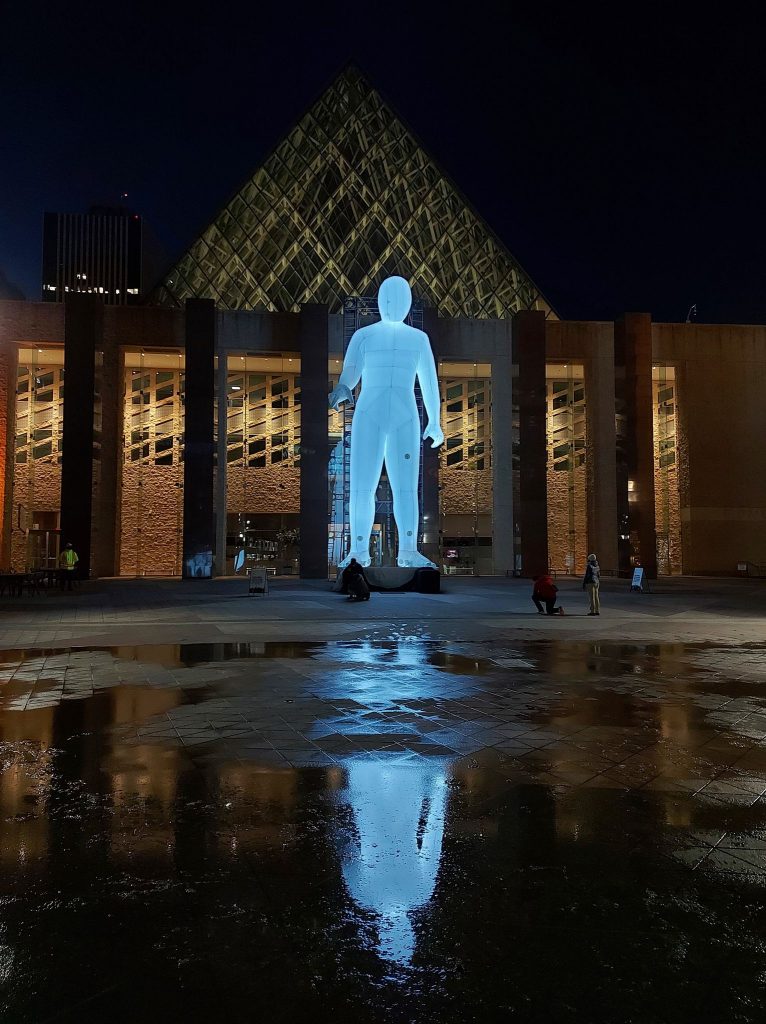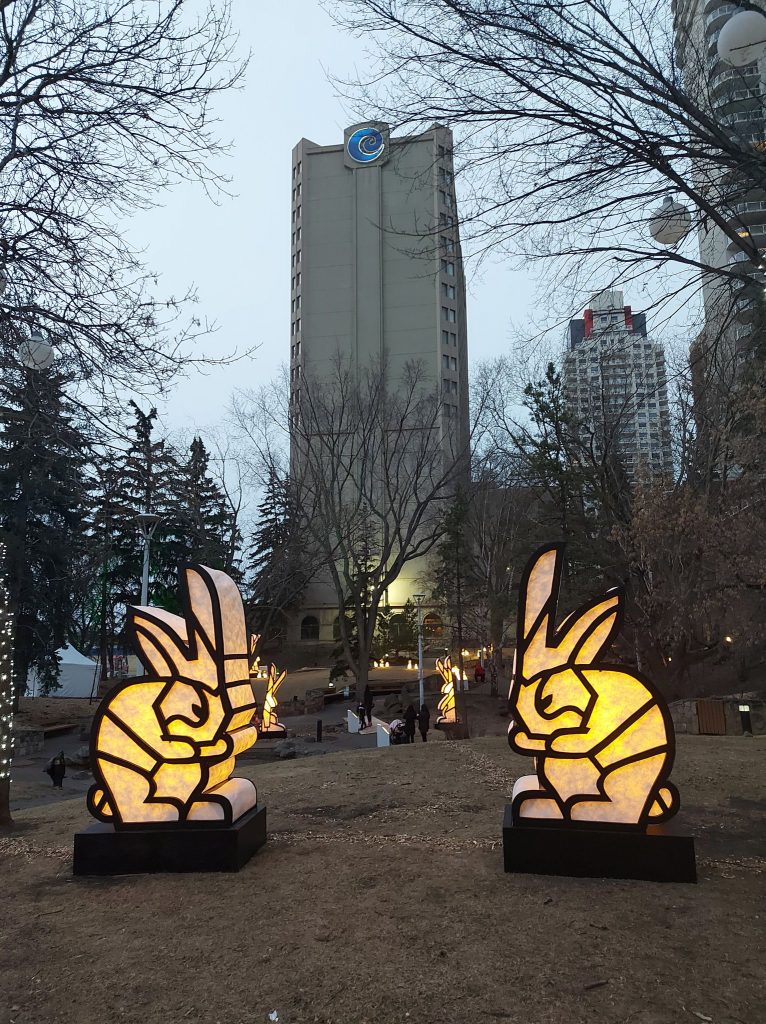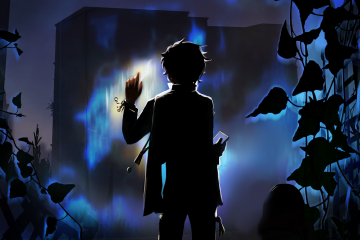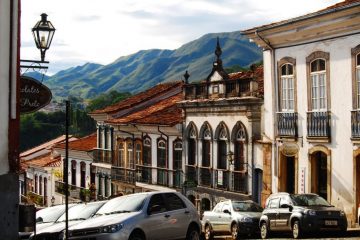Almost every sector has been impacted by the COVID-19 pandemic with a majority of businesses and organisations now working hard to come back from an unprecedented and unpredictable time. Among the hardest hit have been the arts and events spaces, with many organisations facing closure and staff out of work.
But the use of public space has sought to change that, and many cities and towns across the world have seen a vast range of impact from their public space activations, which is going a long way to help arts and events industries recover.
Through Story City’s research, speaking to dozens of municipalities, chambers of commerce, and business associations, across North America we have discovered public space activations and impact have fallen into three categories as organisations and cities attempt to recover: in-person ticketed, public non-ticketed, and digital augmentation.
But which activations proved to be the most economically viable as well as promoting engagement? Story City spoke with a range of organisations to find out.
In-person ticked activations & events during & post-pandemic:
Across the many businesses, cities and organisations Story City spoke with, we found those focused on in-person ticketed activations and events had an oversubscription for tickets – both free and paid – and vast enthusiasm from citizens to attend. The majority of attendees were respectful, automatically kept distances, wore masks, and patiently awaited entry or movement through a space, and these events and activations had high social media engagement and word of mouth spread,
However, limited tickets to these events meant that less than one per cent of the population could attend, which lead to follow-on problems such as finding the right level of marketing needed for events – if you marketed at regular levels, many orgs found themselves getting mass complaints from people missing out on tickets.
One solution to this problem was a lottery, which organisations found reduced the amount of frustration directed at them, but added a large administration workload, particularly designing a system to combat what would happen with lottery winners who could no longer attend or were no-shows.
Many organisers resisted the spend, but ultimately found that they needed increased signage to articulate a highly regulated list of rules of engagement, particularly for events with street closures or ‘open patios’ with firepits etc lest it have even less impact than originally intended. The main problem discovered was that when no time limit was placed on things like outdoor dinning or patio/firepit drinks that groups would linger for upwards of 6+ hours essentially removing half the spaces from circulation leaving the majority of the attendees with nothing to ‘do’ due to people/groups who would not ‘move on’.
Because of physical measures that needed to be put in place from fencing, to signage, to 24/7 security, to crowd control, funding for events didn’t go very far. As a result, a smaller number of events and projects were funded, meaning less businesses were supported via patronage or foot traffic, and less creative industry workers received paid work.
Weather was frequently a problem due to compressed event timelines and the lack of flexibility that comes with an unprecedented pandemic.
While these events have lifted spirits for local populations, they have been considered to have had a low impact on the community per dollars spent.
Non-ticketed Art installations & events and their impact during COVID-19 & Pandemic Recovery
Through discussions with a wide range of organisations, Story City found events without tickets allowed for citizens to visit installations at times and weather convenient to them. The large spaces, activated across weeks, meant there was little risk of gathering, and no need for ticketing, and as such the installation was open for any citizen to experience, so no one missed out and complaints were minimal.
In saying that, in contrast to events, art installations tended to draw a specific demographic, as opposed to events for food or music, festivals, which cater to larger interests and demographics. Part of that may owe to the fact that public art installations encourage little to no interaction (social or physical) from viewers, and so rather than being engaging (as an event or festival would be) it instead becomes a sightseeing activity that doesn’t promote connection, interaction with space, or the surrounding community as effectively as programing in pre-pandemic times.
Interaction, which naturally draws crowds, suggests entertainment, over static installations and buildings that require the interest-driver to come from the participant’s ability to turn that into an activity under their own steam. From conversations about the various activations tried by organisations Story City discovered a lack of interactive or human element resulted in less buzz from consumers, and lower social media traffic, which resulted in less urgency to experience the activity in person.
Large, temporary art installations that allowed for non-gathering are incredibly expensive to create, install, and maintain – the cost of creation and the need for 24-hour security to stop damage and vandalism, saw a significantly reduced impact on creative and business community, so few could be funded.
What became quickly apparent was that more community cohesion was had via smaller projects like community lead parklet creation. When small groups of people had an activity that resulted in beautification and a long-term installation to interact with, more of these could be funded on a grassroots level than the big installations. But organisations who funded these found administration to be arduous, and once the projects were completed, it was harder to spread the word about the new installations, which resulted in less engagement.
Greater success was found through light or sound installations (or a combination of these) as they allowed a greater number of creators to participate at a lower creation costs. While projection equipment still had to be watched, its housing could be designed so it didn’t need 24-hour surveillance or guarding; or it was projected from a building window which can be more secure.
As a result, while these installations would get strong media attention, and have a larger impact on the general population, overall, they had a low impact on the creator and business communities due to less projects being fundable because of high costs, and less areas being activated as a result.
Art installations & events with a digital element works to help with post-pandemic recovery
Digital engagement, like Story City has been the least explored so far in public space arts activation and events, mainly due to lack of publicly available tools to easily implement a digital programing element, in addition to the large costs ($75k+) and development time to have the tech/app created from scratch. It’s a major project that Story City makes changes to easily accessible and affordable.
Those that have done programing have resorted to presenting it (art walks, video storytelling etc) on a website which, depending on how well it is built, can have varying results on a mobile web browser.
Those that did a digital overlay (using Story City, for example) found they could run their activities and events for much longer, sometimes across several months which allowed for weather and reduction of crowds, so it was open to the whole population to experience.
Because digital content can be interactive, in comparison to static art installations, using a digital element drove larger numbers of the population to engage as it was an activity or event in comparison to a site. In some cases, when orgs supplemented their art installations or parklets or other infrastructure with a digital overlay, they found it drew stronger crowds, interaction, and social media engagement.
Those that did a digital overlay augmentation of a physical art installation then found they could extend the life of the installation after the art had been removed as the digital overlay could have images and video of the original installations, allowing for longer interaction beyond the initial installation.
The content or activity didn’t need to be watched by security or be installed or fenced, hence it could not only be long running, allowing a large number of participants, but is significantly cheaper to maintain and create.
Because the costs of creating digital content is lower, these events had a larger impact on the creative and business communities. More creators could be commissioned with the funding amount, and more areas could be activated driving foot-traffic past larger numbers of businesses, attractions, and public facilities like parks, mobility lanes, and art installations.
As a result, organisations that had a digital infrastructure or overlay component in their outdoor or public space activities found it had not only a large impact on the general population, but a large impact on the creative and business populations.
Using a digital overlay like Story City for an event, installation or public art piece will save money, produce stronger and more meaningful engagement, drives foot traffic, and significantly aids in economic recovery of arts, small-business and tourism post pandemic.
To find out more about Story City or to partner with us for your next event or installation, contact us today.








